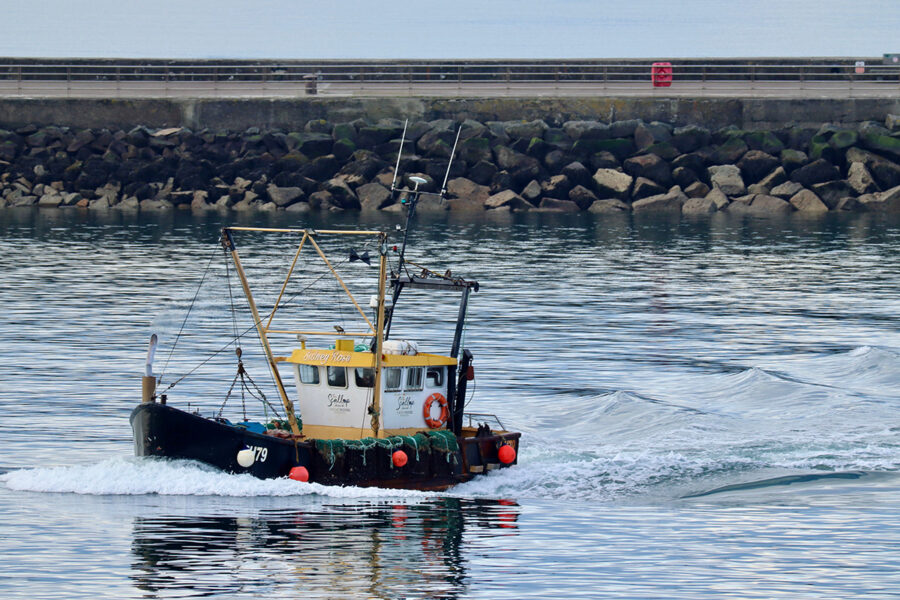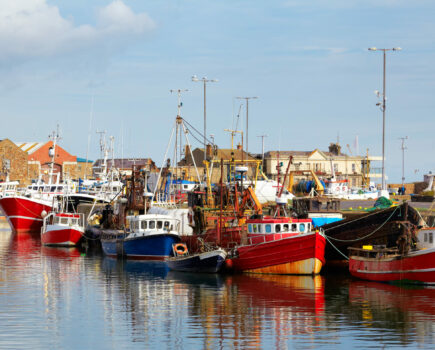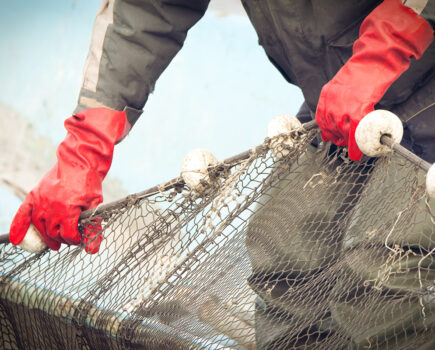Concern is spreading across the South West industry as the implications of a ‘zero TAC’ recommendation for area VII pollack sink in. The species, long a mainstay of many inshore vessels, and a poster fish for low-impact fishing methods, has seen a renaissance with UK consumers in recent years, and has become a vital species in the region.
“Heading off a zero TAC for pollack is the big priority for us – a zero TAC would be really devastating for a lot of boats down here,” Chris Ranford, chief executive of the Cornish FPO, told Fishing News.
The default position after receipt of such advice would be a bycatch-only TAC like that for cod in the South West region, he suggested. This would present ‘massive challenges’ for everyone, and leave little room for manoeuvre.
“Hook and line boats that target pollack inshore are completely reliant on it, and there are a number of boats that are going to have to do something completely different or face a massive business issue.
“Effort would shift to other species as well – the offshore netters will switch full-time to hake, and inshore there will be more pressure on bass for anyone with an entitlement, other non-quota species, or crawfish.
“A zero TAC rather than having a balanced approach puts pressure on other things, and then there’s all those unknowns and unintended consequences.
“We’ve also put some other ideas to government in terms of what technical measures they could use rather than just relying on a TAC to manage the fishery.”
He said the FPO was not ‘trying to fight the science’. The advice over the last few years had been based on landings data, but this year the assessment process had changed.
“A Cefas beam trawl survey showed there was less spread of pollack across the ground. They recognised there were still aggregations around wrecks, but the amount of pollack away from those typical areas they feel has reduced, which has triggered this zero TAC proposal.
“There’s a whole range of other environmental factors we feel are coming into play here in terms of the distribution of certain species.” A Cefas report earlier this year on the impact of warming seas on fisheries
had shown ‘quite clear evidence’ that conditions for species like pollack and cod were going to be more suitable further north than in the South West.
Chris Ranford said fishermen were ready to play their part in conserving the stock and were ‘open-minded’ about what measures could be taken. “Nobody seems to be too opposed to increasing the minimum size of pollack, or considering how we manage it seasonally, like bass.
“Potentially there could need to be a closure in place – this is a consideration, not something we’re saying for definite. But whatever tools we have to manage it better, not one person has said a zero TAC is a good idea – it just causes everyone problems, and it’s not comfortable for the government either.”
The fishery is shared with both France and Ireland, and Chris Ranford said the CFPO was planning a dialogue with French POs ‘to see what their priorities are and how they align with ours’, ahead of any agreement between the EU and the UK on the 2024 TAC.
“We’re trying to get some certainty for people on what they’re going to do next year, rather than it all coming down to the wire, and getting political.
“It’s not the way we want to be managing fisheries – people want to know where they’re going, and what they can get on with on 1 January.”
Choke fears over low cod and sole TACs
In addition to pollack, cod in the South West region and sole in area VIIh are also sources of concern as possible ‘choke’ species in the region’s highly mixed fisheries, said Chris Ranford.
Cod has ongoing zero TAC advice, and in recent years has had only a bycatch allowance. A precautionary 20% cut is advised for sole in VIIh-k.
Chris Ranford said ICES advice on mixed fisheries, looking at species interactions, was about to be published. “The TAC setting for single- stock advice is one thing, but when we look at it in the mixed- fishery scenario, it produces another range of options to consider,” he said.
“Cod, monkfish, megrim, hake, sole all become part of this other conversation, and when you’ve got a zero TAC for cod in this mixed fishery, it’s a big problem.
“The point we always make is that cod is such a small part of the catch – it’s not a targeted fishery for us. Our members can catch one box a month, but when boats are targeting monkfish or megrim, it can be a serious choke.
“If you have to restrict access to monks and megrim to recover cod, it all gets quite complicated and messy. So we have to send a clear, consistent message every year to the government to really pay attention to how that can affect the fleet economically.
“We have multi-million-pound fisheries we’re targeting on a daily basis, and something we don’t have any interest in, cod, could pull those down quite quickly. We have to make sure they’re really clued up on that predicament.”
The Cornish FPO chief said VIIh-k sole was ‘a really data- poor stock that can become a real choke’ for boats that fish in the area for monks and megrim.
“The majority of the data for the VIIh-k sole stock comes from area VIIj/k, but our members tell us anecdotally that the area h component is the same stock as in VIIe (Western Channel), and they fish between those two areas for sole.
“There is a proposed precautionary 20% cut for VIIh sole that we really have to try to fend off, because it’s one of those stocks with so little data that it leads to a precautionary cut every year and we end up with hardly anything. We have to avoid that at all costs – even a roll-over would be better than a cut.
“We’re working with Cefas to get some genetic sampling of sole in VIIh and VIIe to prove it’s the same stock, and we’re waiting for the results of that. Hopefully that will start to unravel that choke problem, and get us out of that situation in the long term.”
This story was taken from the latest issue of Fishing News. For more up-to-date and in-depth reports on the UK and Irish commercial fishing sector, subscribe to Fishing News here or buy the latest single issue for just £3.30 here.
Sign up to Fishing News’ FREE e-newsletter here.








